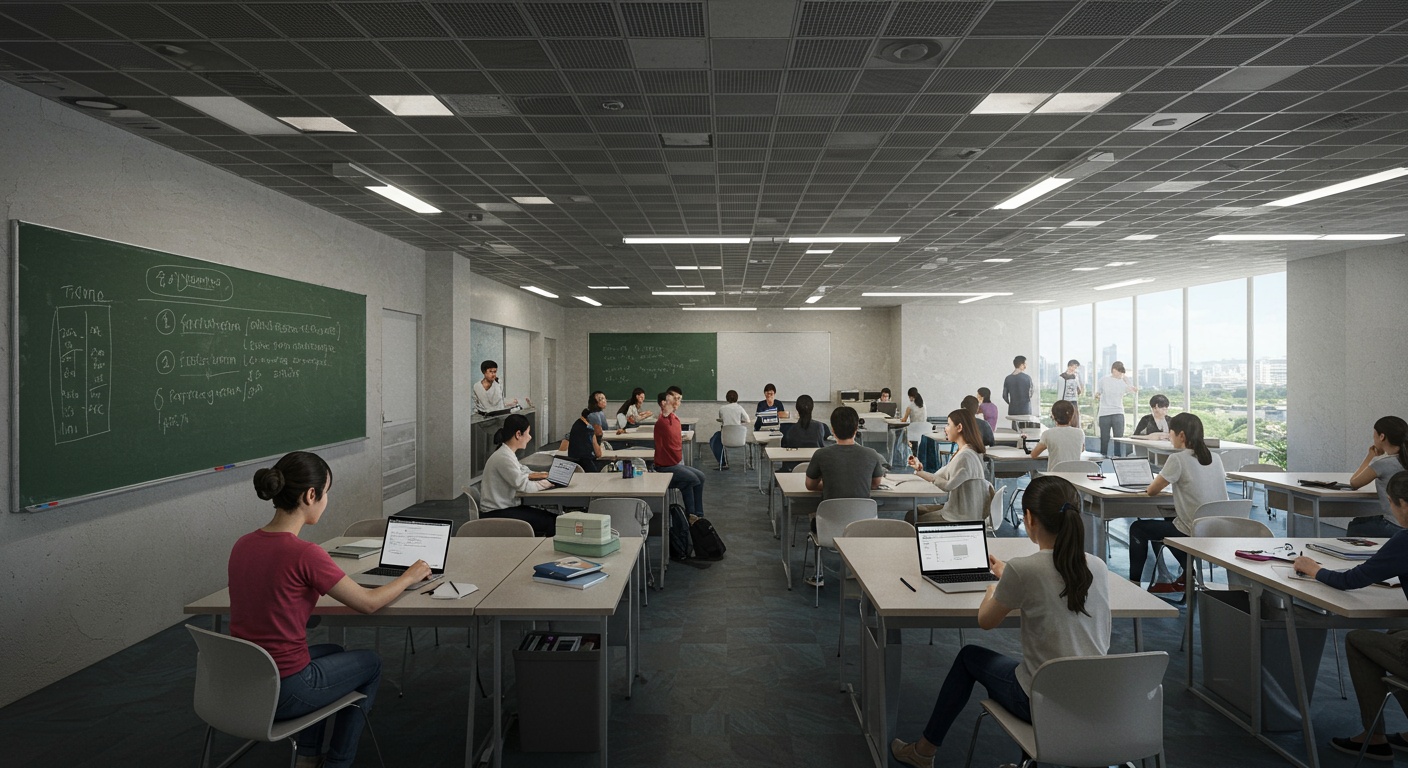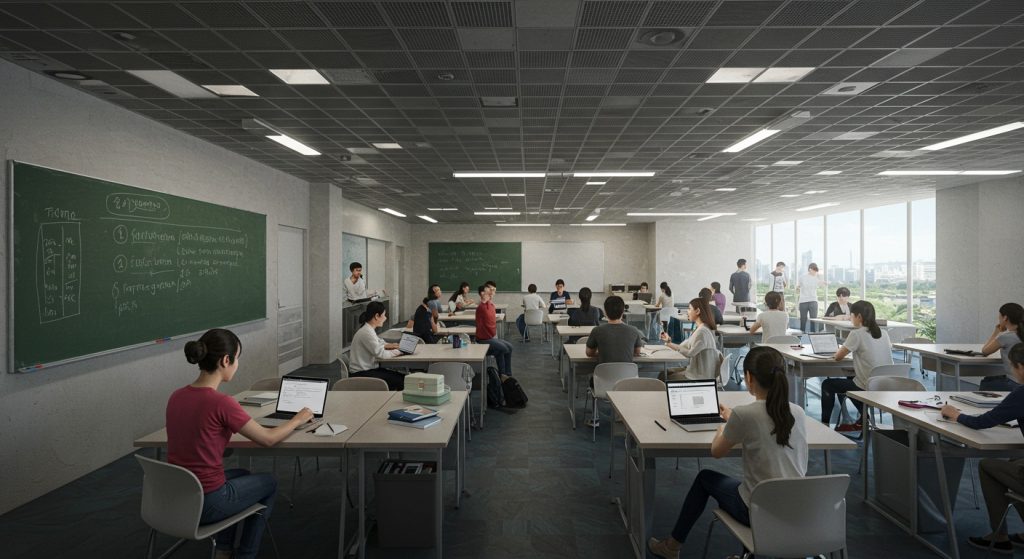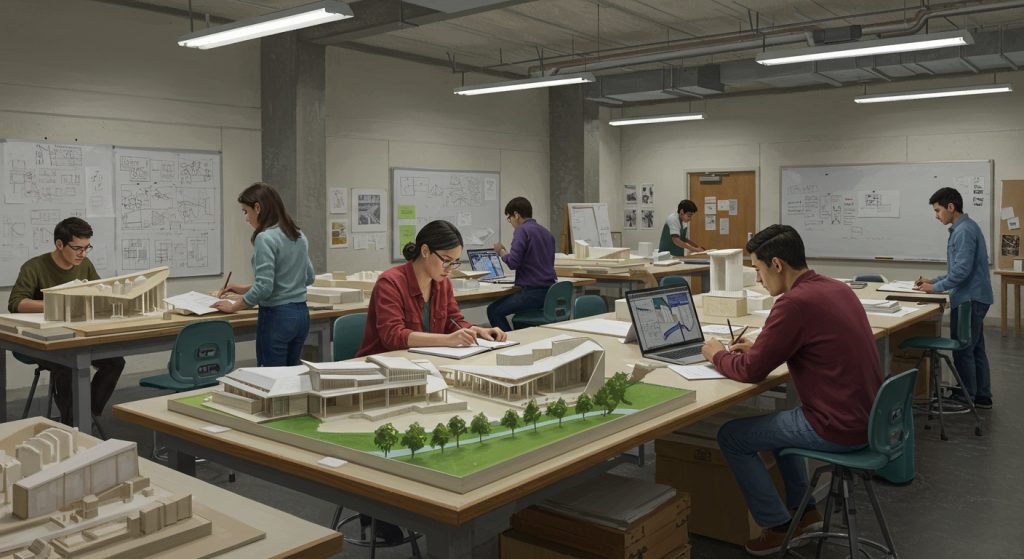Dreaming of crafting iconic skylines and sustainable spaces. Worried about the hefty tuition fees? Asia’s architectural landscape is booming, creating a high demand for skilled architects. But, accessing quality education doesn’t have to break the bank. We’ll explore institutions across Asia that offer rigorous architectural programs without exorbitant costs. Consider factors like accreditation by bodies like the ARCASIA, faculty expertise in areas like parametric design and BIM. Access to cutting-edge facilities. Our exploration highlights institutions that balance affordability with robust curricula, studio-based learning. Industry connections, ensuring you receive a world-class architectural education that sets you up for success.

Defining “Value for Money” in Architectural Education
Before diving into specific institutions, it’s crucial to define what “value for money” means in the context of architectural education. It’s not simply about the lowest tuition fees. Instead, it’s a holistic evaluation considering:
- Tuition Costs: The direct expenses associated with attending the program.
- Living Expenses: The cost of living in the city or region where the university is located. This can vary significantly.
- Program Quality: This includes faculty expertise, curriculum relevance, accreditation status. Access to resources.
- Career Prospects: The likelihood of securing employment after graduation, the average starting salary. The network of alumni.
- Scholarship and Financial Aid Opportunities: Availability of scholarships, grants. Other forms of financial assistance.
- Infrastructure and Resources: Access to well-equipped studios, workshops, digital fabrication labs, libraries. Other essential resources.
A program with a slightly higher tuition fee might offer superior value if it leads to better career outcomes or provides access to significantly better resources.
Key Considerations When Choosing an Architecture Program
Selecting an architecture program is a significant decision. Prospective students should consider the following factors:
- Accreditation: Is the program accredited by a recognized architectural accreditation board? Accreditation ensures that the program meets specific standards of quality and prepares graduates for professional licensure.
- Curriculum: Does the curriculum cover a broad range of architectural topics, including design theory, history, technology. Professional practice? Does it offer opportunities for specialization in areas of interest?
- Faculty: Are the faculty members experienced architects, academics. Researchers? Do they have a strong track record of teaching and mentoring students?
- Studio Culture: What is the studio culture like? Is it collaborative, supportive. Challenging? Do students have opportunities to work on real-world projects and engage with the community?
- Location: Is the university located in a city or region with a vibrant architectural scene? Does the location offer opportunities for internships, site visits. Networking?
- Internship Opportunities: Does the university have strong connections with architectural firms and other organizations that offer internship opportunities? Internships are essential for gaining practical experience and building a professional network.
- Alumni Network: Does the university have a strong alumni network? A strong alumni network can provide valuable career advice, mentorship. Job opportunities.
Evaluating Program Quality: Beyond Rankings
While university rankings can be a starting point, they shouldn’t be the sole determinant of program quality. It’s crucial to look beyond the rankings and conduct thorough research on each program. Consider these factors:
- Faculty Research: What are the faculty members researching? Are they contributing to the advancement of architectural knowledge?
- Student Work: Review portfolios of current students and recent graduates. This will give you a sense of the quality of design education provided by the program.
- Industry Connections: Does the program have strong ties to the architectural industry? Does it collaborate with firms on research projects or design studios?
- Student-Faculty Ratio: A lower student-faculty ratio generally indicates more individualized attention and mentorship.
- Guest Lectures and Workshops: Does the program regularly invite prominent architects and designers to give lectures and workshops?
Affordable Architecture Programs: A Regional Perspective
The cost of architectural education varies significantly across Asia. Here’s a look at some regions known for offering relatively affordable programs while maintaining quality:
- India: India boasts a number of well-regarded architecture schools with comparatively lower tuition fees than Western institutions. While living expenses can vary widely depending on the city, they are generally lower than in Europe or North America.
- China: China’s rapid economic growth has fueled significant investment in higher education, including architecture programs. While some programs are expensive, others offer excellent value for money.
- Southeast Asia (Thailand, Malaysia, Philippines): Several universities in Southeast Asia offer architecture programs at competitive tuition rates. These programs may not be as internationally renowned as some of the top schools in Europe or North America. They can provide a solid foundation in architectural principles and practice.
Spotlight on Specific Institutions (Examples)
It’s difficult to provide a definitive list of the “best” value-for-money architecture colleges without knowing your specific priorities and financial situation. But, here are a few examples of institutions that are often cited for offering a good balance of quality and affordability:
- India:
- Sir J. J. College of Architecture, Mumbai: A historic institution with a strong reputation and relatively low tuition fees.
- School of Planning and Architecture (SPA), Delhi: A highly ranked public institution with a focus on urban planning and design.
- IIT Kharagpur – Department of Architecture: Offers a well-rounded architectural education within a prestigious engineering institution.
- China:
- Tsinghua University: Renowned for its strong engineering programs, Tsinghua also has a highly-regarded architecture department. (While tuition might be higher than some other options, the overall reputation and career prospects often justify the investment).
- Tongji University: Another top-tier Chinese university with a strong architecture program.
- Southeast Asia:
- National University of Singapore (NUS): While not the cheapest, NUS offers a world-class architectural education in a vibrant city-state. Consider scholarship opportunities.
- Universiti Teknologi Malaysia (UTM): Offers a more affordable option in Malaysia, with a focus on sustainable design.
essential Note: This is not an exhaustive list. Tuition fees and program details can change. Always visit the university’s website for the most up-to-date data.
The Role of Technology in Modern Architectural Education
Modern architectural education emphasizes the use of technology to design, visualize. Construct buildings. Key technologies include:
- Building insights Modeling (BIM): BIM is a digital representation of the physical and functional characteristics of a building. It allows architects to create detailed 3D models, review building performance. Collaborate with other professionals. Top Architecture Programs: Global Design Leaders often integrate BIM into their curriculum.
- Computer-Aided Design (CAD): CAD software is used to create 2D and 3D drawings of buildings. Popular CAD programs include AutoCAD and Revit.
- Rendering Software: Rendering software is used to create photorealistic images and animations of buildings. Popular rendering programs include V-Ray and Lumion.
- Digital Fabrication: Digital fabrication technologies, such as 3D printing and laser cutting, are used to create physical models and prototypes of buildings.
- Parametric Design: Parametric design is a method of designing buildings using algorithms and parameters. This allows architects to explore a wide range of design options and optimize building performance.
When evaluating architecture programs, consider the extent to which they integrate these technologies into the curriculum and provide access to the necessary software and equipment. A strong emphasis on technology will prepare you for the demands of the modern architectural profession.
Career Paths for Architecture Graduates
An architecture degree opens doors to a variety of career paths, including:
- Architect: The most common career path for architecture graduates. Architects design buildings and oversee their construction.
- Urban Planner: Urban planners develop plans for the growth and development of cities and regions.
- Landscape Architect: Landscape architects design outdoor spaces, such as parks, gardens. Plazas.
- Interior Designer: Interior designers design the interiors of buildings.
- Construction Manager: Construction managers oversee the construction of buildings.
- Academic/Researcher: Some architecture graduates pursue careers in academia, teaching and conducting research on architectural topics.
- Design Consultant: Providing design expertise to clients on a project basis.
The specific career path you choose will depend on your interests, skills. Experience.
Conclusion
Choosing the right architecture school in Asia isn’t just about affordability; it’s about investing in your future as a design leader. We’ve explored programs that balance cost with quality, emphasizing practical experience and innovative curricula. Looking ahead, the architectural landscape is rapidly evolving with trends like sustainable design and BIM integration becoming increasingly crucial. My advice? Don’t just look at tuition fees. Consider the faculty’s industry connections and the opportunities for internships – these are invaluable for launching your career. As you embark on this journey, remember that your portfolio is your strongest asset. Continuously refine it with projects that showcase your creativity and problem-solving skills. Success in architecture requires dedication and a willingness to learn. With the right foundation from a value-driven program, you’ll be well-equipped to shape the skylines of tomorrow.
FAQs
Okay, so I’m looking for a great architecture school in Asia. I don’t want to break the bank. Is that even possible?
Absolutely! You’re not alone in that quest. There are definitely architecture colleges in Asia that offer excellent quality education without the crazy tuition fees of, say, schools in the West. It’s all about knowing where to look and what to prioritize.
What are some general factors that make an architecture program ‘good value’ in Asia?
Good question! ‘Value’ isn’t just about the cheapest tuition. Think about it like a recipe. You need a strong curriculum focusing on both theory and practical application, experienced faculty who are actually practicing architects (not just academics), good studio facilities. Connections to the local (and maybe even international) architecture scene for internships and future job opportunities. Also, consider the cost of living in the city where the school is located!
Are there specific countries in Asia that are known for having more affordable, high-quality architecture programs?
Yep! Generally, countries like India, China (though it can vary greatly by city). Some Southeast Asian nations like Thailand and Malaysia often have programs that offer a good balance of quality and affordability. Researching specific universities within those countries is key, though.
How crucial is accreditation when choosing an architecture school in Asia?
Accreditation is super crucial. It’s a stamp of approval that says the program meets certain standards. Look for accreditation from recognized national or international bodies. This will definitely help with job prospects later on, especially if you plan to work outside of the country where you studied.
Besides tuition, what other costs should I factor into the ‘value’ equation?
Think beyond just the sticker price! You’ve got to consider accommodation (dorms are usually cheaper), food, transportation, studio materials (which can get expensive!) , visa costs. Even entertainment. Living in a major city like Shanghai or Mumbai will naturally be pricier than a smaller town.
I’ve heard that language can be a barrier. Are most architecture programs in Asia taught in English?
It depends on the school and the country. Many programs in larger universities, especially those aiming for international students, do offer instruction in English. But, learning at least some of the local language will definitely enhance your experience and make it easier to connect with locals and potentially find internships. Plus, it’s just good manners!
What kind of career opportunities can I expect after graduating from an architecture school in Asia?
That depends on your skills, portfolio. Where you want to work! But generally, opportunities exist in architectural firms (of course!) , urban planning agencies, construction companies, interior design studios. Even government organizations. Networking and building a strong portfolio during your studies are crucial for landing that dream job.



